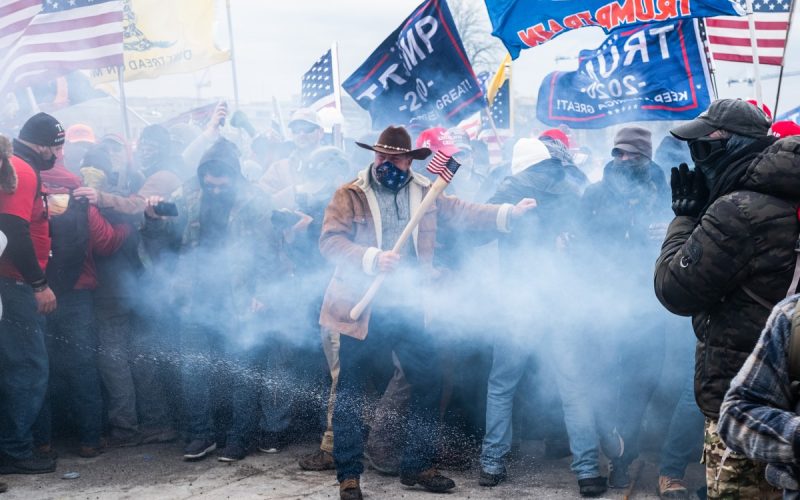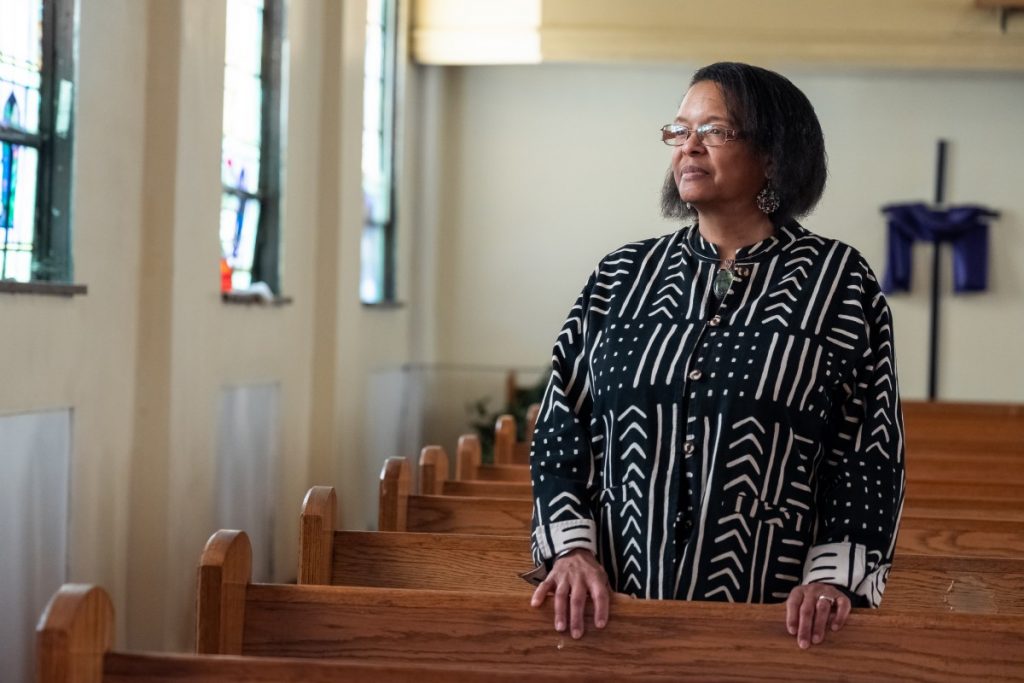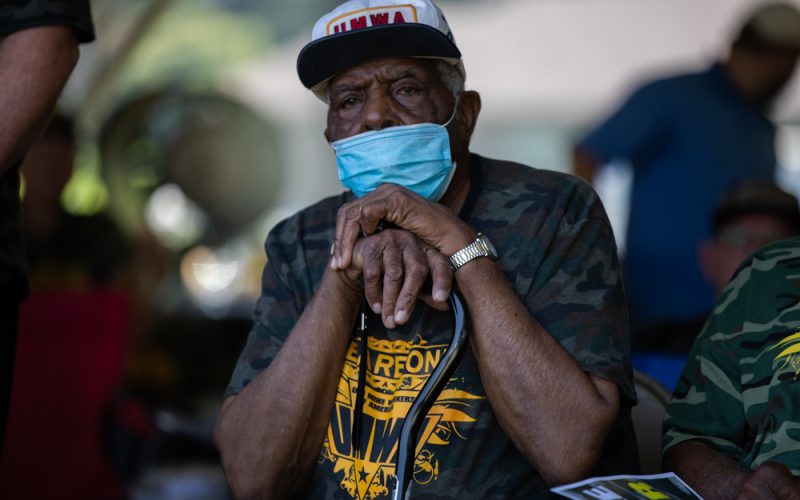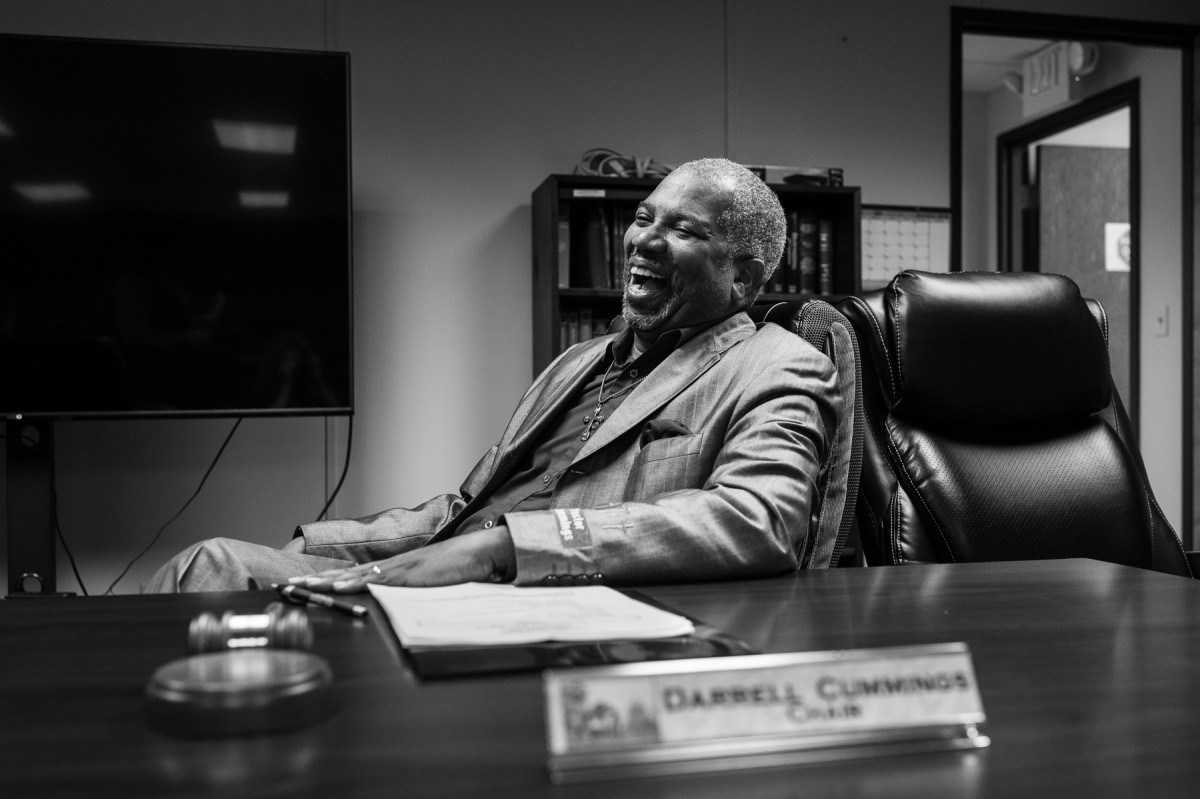As 2021 comes to a close, our staff has been reflecting on which stories impacted them this past year.
From Chris Jones’ firsthand experience at the January 6 attack on the U.S. Capitol to the longterm impacts of COVID-19 told from the perspective of a 6th grader in Alabama, this year’s list was difficult to narrow down. Take a look below at what stories stood out to our staff most in 2021.
Commentary: Gun Violence Has Defined Gen Z’s School Life. Will the Capitol Breach Change Anything?
I was in junior high when two students gunned down 12 of their classmates and a teacher at Columbine High School. I was in college during the Virginia Tech massacre.
Watching these tragedies unfold, I prayed that gun violence would not be inflicted upon our children – that my generation would solve it. Yet reading Katherine Hudson’s essay this year in our Appalachia Youth Creators vertical, as she reflected on the memories of Sandy Hook and the terror of Parkland, I realized that nothing has changed.
“Every day, I am grateful that my school was not added to the ever growing list of schools that have experienced actual shootings,” Katherine writes. “Still, it is sad that this is something that I should ever have to think about. Gen Z has had our lives marked by school shootings: Columbine, Sandy Hook, Parkland. When Sandy Hook happened, I was only two years older than the victims. My family and teachers reeled with how to explain it. How can you explain it?”
Gun violence is as American as apple pie. But it doesn’t have to be this way. My generation was failed. Gen Z is failed. Let us not fail another generation by allowing them to grow up being gunned down.
-Skylar Baker-Jordan, Contributing Editor for Community Engagement
You Asked, We Answer: What Really Happened at the Capitol on Jan. 6?

This story, which we at 100 Days in Appalachia reported in the immediate aftermath of the January 6th, attack on the U.S. Capitol, may not have been the biggest or flashiest story of 2021, but it’s one of my favorite articles I’ve ever gotten to work on.
It wasn’t just a headline. This story directly answered questions our newsroom got from our readership and community about the Capitol assault. We got to witness the impact of this story first hand on social media and in conversations around the region as people were able to get clear answers to their questions about a chaotic day.
As a journalist, I always want to be a resource first, and sometimes, that requires some help from our readers in the form of telling us exactly what information they need to know about a subject or event. We were really lucky to have readers and people in our area who were willing to provide us with questions, making sure that our coverage spoke directly to the concerns of Appalachians at an uncertain time in American history.
-Chris Jones, Domestic Extremism Correspondent
Holler, Y’all and Appalachian Drawls: My Childhood of Code Switching in Appalachia
This essay from high schooler senior Ava Dixon about her accent, stereotypes and her own reckoning with where she’s from and how she sounds hit me right in the heart – and it did for you as well because it was the most read original piece of writing on our website for months this year.
The growth illustrated in this essay, from someone who felt shame over people’s snide remarks on her accent to a young person committed to improving her home and region, sticks with me every time I read it. The conversation about classism, stereotyping and accents is nuanced and necessary, and hearing how Ava’s shifting relationship to her accent shaped her sense of self and sense of home added so much to that.
-Rainesford Stauffer, Contributing Editor
Commentary: A Key to Solving Appalachia’s Mental Health Crisis? Culturally-responsive Care.
Since the start of the COVID-19 nearly two year ago now, the voices and stories of our youth have been pivotal, whether it be concerns among youth too young to be vaccinated to a call for mental health services on college campuses. And as I looked back at all the pieces we published in 2021, it became clear those written by our region’s youth struck me the most. But none impacted me more than this commentary by Ariana Velasquez.
In her piece, Velasquez shares a personal account of navigating the mental health system as an Appalachian; a system which attempted to erase her identity altogether. Not only did her story resonate with me and likely many others, she provided a solution to the problem — reminding us that “more than anything, it seems that without a consistent effort of recognition of the Appalachian Identity as legitimate and not something to be ‘cured’ or hidden, Appalachians will be unable to receive ethical mental health treatment.”
-Gabriella Brown, Editorial Assistant
As COVID-19 Damages Black Appalachian Communities, This Mother, Daughter Team Are Working to Save an Unexpected Casualty: Black History

In many communities throughout Appalachia, our history is dying off with our ancestors. It’s dire that we preserve and protect the culture and stories of who we are as a people, but through the story of a mother and daughter team in Uniontown, Pennsylvania, we recognized this year that the history of Black communities in our region needs even more attention and more resources to preserve.
I feel extremely lucky to have had the privilege to share this inspiring story of a family preserving Black history in their Appalachian community and even more grateful to meet Norma and Raina, who really opened up and let the 100 Days team into their lives – even if it was over Zoom in the middle of a pandemic. Their work is inspiring and worth a second look.
-Kristen Uppercue, Deputy Editor for Special Projects
Political Conflicts Are Escalating in Sanctuaries of Southwestern PA Churches. Can They Heal?
I think it’s easy to fall into the trap of believing that all church-going people in Appalachia are a conservative monolith with the same political and cultural views. But in this story co-published with Pittsburgh-based PublicSource, we explored the diversity of views within faith communities in southwestern Pennsylvania.
This story looks closely at the many divisions within congregations over all sorts of issues — and the strategies religious leaders are using to navigate those conflicts as they either embrace or pushback against the politicization of faith spaces.
-David Smith, Multimedia Producer
Photos: Alabama Union Miners Enter Fourth Month of Strike, Thousands Rally for Wages and Benefits

One of my favorite stories of the year was this photo essay by Quez Shipman, a Birmingham-based photographer I’ve had the pleasure of working with a couple times over the past few years. The imagese chronicle the impasse in negotiations between United Mine Workers members and Warrior Met Coal.
I like it because it underscores that Appalachians are certainly still agitating for union representation. I like it because it illustrates the ethnic diversity of Appalachia. And I like it because it’s reported from a place that most people probably aren’t aware is within Appalachia: central Alabama. It embodies a lot of what 100 Days in Appalachia is all about.
-Taylor Sisk, Healthcare Correspondent
When You Aren’t Old Enough for a Vaccine: An Alabama Sixth Grader on COVID-19
As the editor of our Appalachian Youth Creators vertical, it was difficult for me to choose just one story to highlight at the end of this year, so I’m including a second.
For months, coverage and questions about when COVID-19 vaccines would be authorized for children under 12 rightfully dominated headlines, interviewing parents, educators and pediatricians. This piece by Alabama 6th grader Taylor, who contracted COVID at school, centered the voice of a young person in a conversation where they’d mostly been talked for instead of talked with.
The thoughtfulness and care with which Taylor approached this piece (including interviewing classmates!) inspired me, and I felt it added something new to coverage of the impact of the pandemic, especially in regard to how profoundly the pandemic has shaped what young people are experiencing in school.
-Rainesford Stauffer, Contributing Editor



